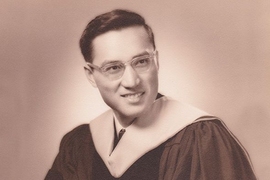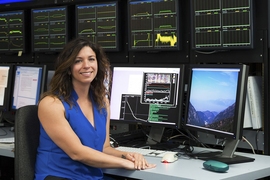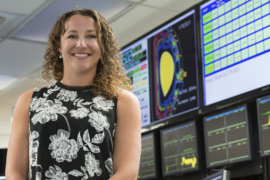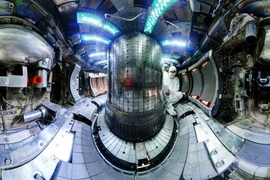The American Physical Society (APS) has recognized MIT Plasma Science and Fusion Center (PSFC) principal research scientists John Wright and Stephen Wukitch, as well as Yevgen Kazakov and Jozef Ongena of the Laboratory for Plasma Physics in Brussels, Belgium, with the Landau-Spitzer Award for their collaborative work.
Given biennially to acknowledge outstanding plasma physics collaborations between scientists in the U.S. and the European Union, the prize this year is being awarded “for experimental verification, through collaborative experiments, of a novel and highly efficient ion cyclotron resonance heating scenario for plasma heating and generation of energetic ions in magnetic fusion devices.”
The collaboration originated at a presentation on a proposed heating scenario by Kazakov, given at a conference in 2015. Wright and Wukitch were confident that the MIT's Alcator C-Mod (the world’s highest-field tokamak) and the UK's JET (the world’s largest tokamak) would allow for an expedited and comprehensive experimental investigation. C-Mod’s high magnetic fields made it ideal for confining energetic ions, and its unique diagnostics allowed the physics to be verified within months of the conference. The results greatly strengthened Kazakov and Ongena's proposal for a JET experiment that conclusively demonstrated generation of energetic ions via this heating technique.
Additional C-Mod experiments were the first to observe alpha-like energetic ions at high magnetic field and reactor-like densities. The joint experimental work highlighting JET and C-Mod results was published in Nature Physics.
One of the key fusion challenges is confining the very energetic fusion product ions that must transfer their energy to the core plasma before they escape confinement. This heating scenario efficiently generates energies comparable to that of those produced by fusion and can be used to study energetic ion behavior in present day devices such as JET and the stellarator Wendelstein 7-X (W-7X). It will also allow study in the non-nuclear phase of ITER, the next-generation fusion device being built in France.
“It will be the icing on the cake to use this scenario at W-7X,” says Wright. “Because stellarators have large volume and high-density plasmas, it is hard for current heating scenarios to achieve those fusion energies. With conventional techniques it has been difficult to show if stellarators can confine fast ions. Using this novel scenario will definitely allow researchers to demonstrate whether a stellarator will work for fusion plasmas.”
The award, given jointly by APS and the European Physical Society, will be presented to the team in November at the APS Division of Plasma Physics meeting in Portland, Oregon.











